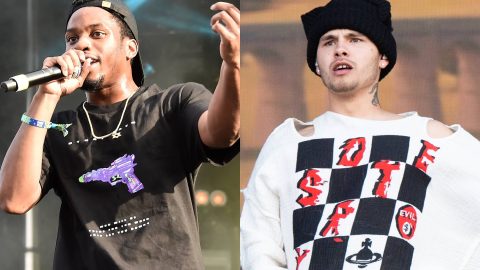
Hey! Listen is a twice-monthly column unearthing obscure video game music and trivia. Let’s start by taking a dive into the compositional and production secrets that make the music in The Legend of Zelda: Ocarina of Time so unforgettable.
As I’ve grown older, I’ve developed a strange habit of making noises or singing really loudly when I get excited, something I used to think was a bit weird but now proudly own, courtesy of a recent ADHD diagnosis. When I’m on nights out with friends or my very patient partner – and they can attest to this – I’m consumed by the overwhelming sensation to simply release energy. This energy is usually released through the medium of singing (or screaming) melodies from The Legend of Zelda: Ocarina of Time, aka, one of the greatest games to ever grace the Nintendo 64.
But the enduring legacy of Koji Kondo’s music, the composer responsible for the music in The Legend of Zelda and loads more of your favourite Nintendo games, goes way beyond me screaming Saria’s Song over last orders. Jazz quartet BadBadNotGood, The Late Show’s Jon Batiste and Rejjie Snow are just some of the big names the game has left its mark on, while YouTube is home to a plethora of covers and arrangements covering everything from Lindsey Stirling’s solo violin performances and prog-rock concept albums to a Lost Woods dubstep remix racking up forty million views. If that wasn’t enough, Kondo’s music has even inspired new genres, such as the aptly-named Zeldawave.

Basically, there are loads of people that can’t get enough of the music in Ocarina of Time. There’s no denying that Koji Kondo is a man of many talents. Most of the main motifs in the game are based around five notes or less, but his music becomes even more impressive when you discover the unconventional way in which he pieced Ocarina of Time’s soundtrack together. He’s not just a master of melodies. Kondo basically gave Ocarina of Time the hip-hop treatment by slicing together samples from the unlikeliest of sources.
There are two parts to Ocarina of Time’s music: the catchy melodies and themes you hear in main locations, and the atmospheric drones of its eerie dungeons, which border on the verge of Nine Inch Nails or Burial territory as opposed to the Casiopea or T-Square Jazz fusion that inspires his usual stuff. The Hyrule Field theme is a happy walk in the park compared to the existential dread of Shadow Temple.
Ocarina of Time’s biggest secret is that most of the music in its dungeons is made by flipping sounds from sample CDs, namely Spectrasonics’ Distorted Reality 1 and Zero-G Ethnic Flavours, to name just a few. In the late ‘90s, it was commonplace for video game composers to use sample CDs or library sounds (royalty-free music) in their soundtracks and for sound effects. If you’re familiar with the controversy surrounding the use of an Islamic chant in Ocarina of Time’s Fire Temple, this stemmed from a sample CD.

So does all of this sampling make Ocarina of Time’s music any less impressive? Absolutely not. If anything, it makes Kondo’s work even more impressive. He didn’t just rip a load of samples from CDs and whack them into the game. Like any top producer, he spent a lot of time stretching them, slicing them or merging them with other ideas to make them his own.
Just listen to the way he pieces together the music for the game’s first dungeon, Inside The Deku Tree, or how he pitch shifts a load of choir samples for the opening music in Legend of Hyrule. My personal favourite is the Forest Temple theme.
There’s a cool story behind these sample CDs. In an interview at the time, Kondo mentioned that he found a local CD store that let him listen to music before buying it. He also talks about his love for Indian music – Indian folk music in particular – which probably explains a lot of the unusual instrumentation, texture and rhythms that feature in the game. Potion Shop is one of the best examples with its tabla and sitar combo, and then there’s the Ganondorf Battle theme with the ludicrous time signature of 23/16.

Fast forward to today and you can hear the same sample CDs that Kondo used in other The Legend of Zelda games, including Majora’s Mask, Wind Waker and even Twilight Princess. While Ocarina of Time was the last game in the series that Kondo worked on in full, it’s great to see his approach still being utilized years later.
A lot of people define creativity as the process of creating something new out of two existing ideas. That process has helped create some of the biggest hip-hop bangers out there, and if we’re applying that definition of creativity to Kondo’s music, he’s not just one of the best composers in the video game industry, he’s one of the best music producers too.
Mat Ombler is a freelance journalist and contributor to NME. If you’d like to read more about the world of video game music, why not check out Rock The Spacebar?
The post Koji Kondo’s ‘Ocarina of Time’ soundtrack is a hip-hop album appeared first on NME.



